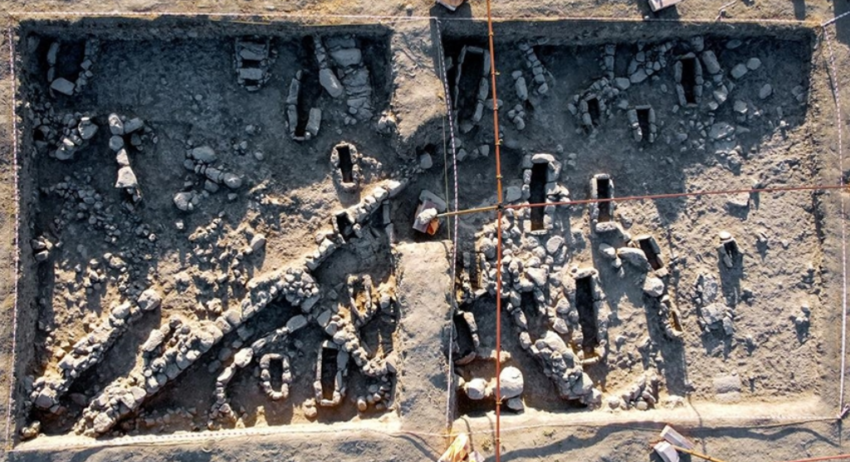Remains of an Iron Age weaving workshop and a section where animals were fed unearthed during excavations at Gökhöyük in Seydişehir district of Konya.
Covering 5 hectares, Gökhöyük was discovered by James Mellaart in the 1950s. No work was carried out in the area for many years, but in 2002, when archaeological artifacts were unearthed during soil removal in the east of the mound, rescue excavations were started by Konya Museum Directorate experts in 2002-2005. In 2019, the survey was conducted with a new permit.
During 3 years of work in the region, Neolithic and Bronze Age settlements were identified around Gökhöyük. Dr. Ramazan Gündüz, head of Gökhöyük excavations at Selçuk University, told AA: “We started archaeological excavations in 2023 after the survey. There are Iron Age layers at the top of Gökhöyük. As far as we understand from the rescue excavations and the materials we found on the surface, there are cultural layers that can be dated to the Iron Age, below the Bronze Age and below that to the Chalcolithic and Neolithic periods.”
Architecture similar to Çatalhöyük
Ramazan Gündüz says the Neolithic finds at the site are remarkably similar to Çatalhöyük. “The houses made of mudbrick and their interior furnishings are architecturally similar. Apart from that, we can say that the ceramics, which we can call domestic daily goods, and obsidian arrowheads are also similar. We can reach very exciting data from the architectural structures to be unearthed in the coming years, as in Çatalhöyük.”
The trench started at the top of the mound and yielded important finds. It is thought that the stone built walls revealed an Iron Age (1200-330 BC) architectural structure. Characteristic ceramics of the Middle Iron Age were found in this architectural structure. Various terracotta artifacts and tools were also recovered. It is understood from the large pithos (large storage vessel) fragments recovered from the site that part of the building was used for storage purposes. In the other part of the building, a large number of loom weights and spindle whorls (tools used in weaving) were found. This suggests a possible Iron Age weaving workshop here. Obtaining the wool required for weaving can be interpreted as the people living here had small cattle. The bones of small cattle unearthed during the excavations also support this idea.”
Gündüz added that the findings show that part of this structure may have been used as a corral, while the other part may have been used as a workshop and living space. We eagerly await the news from the excavation.
